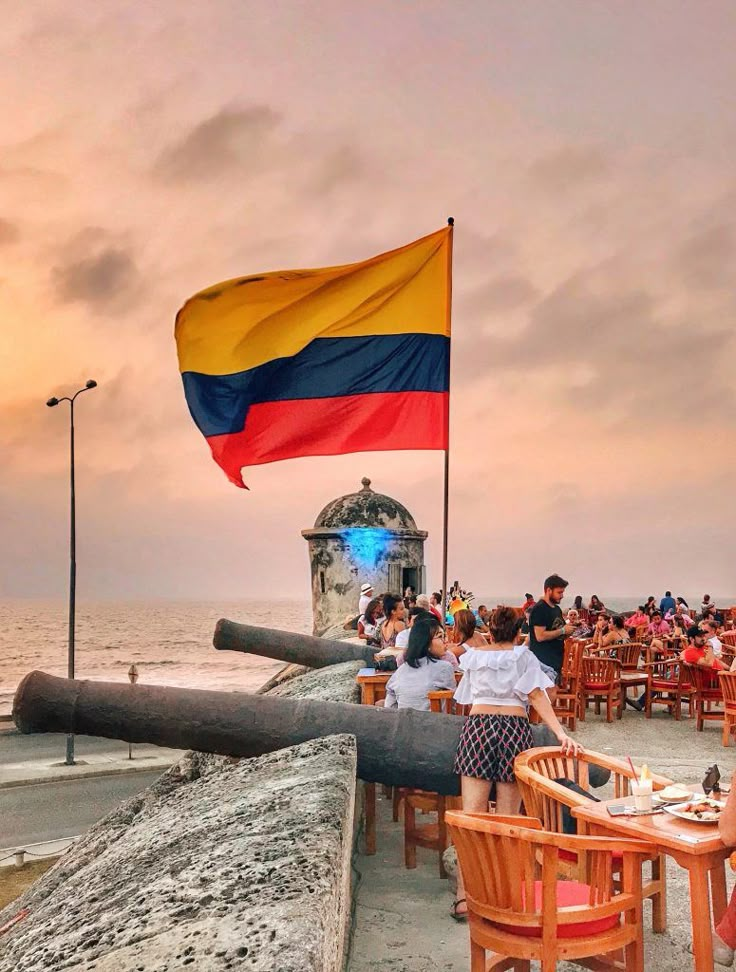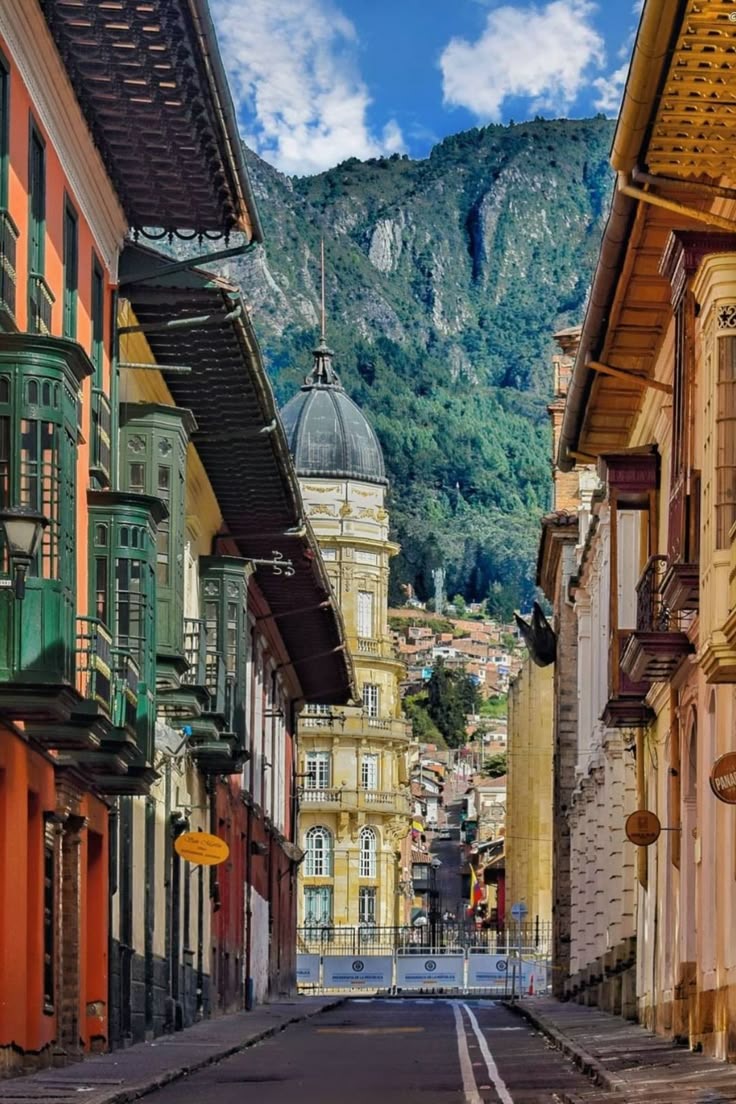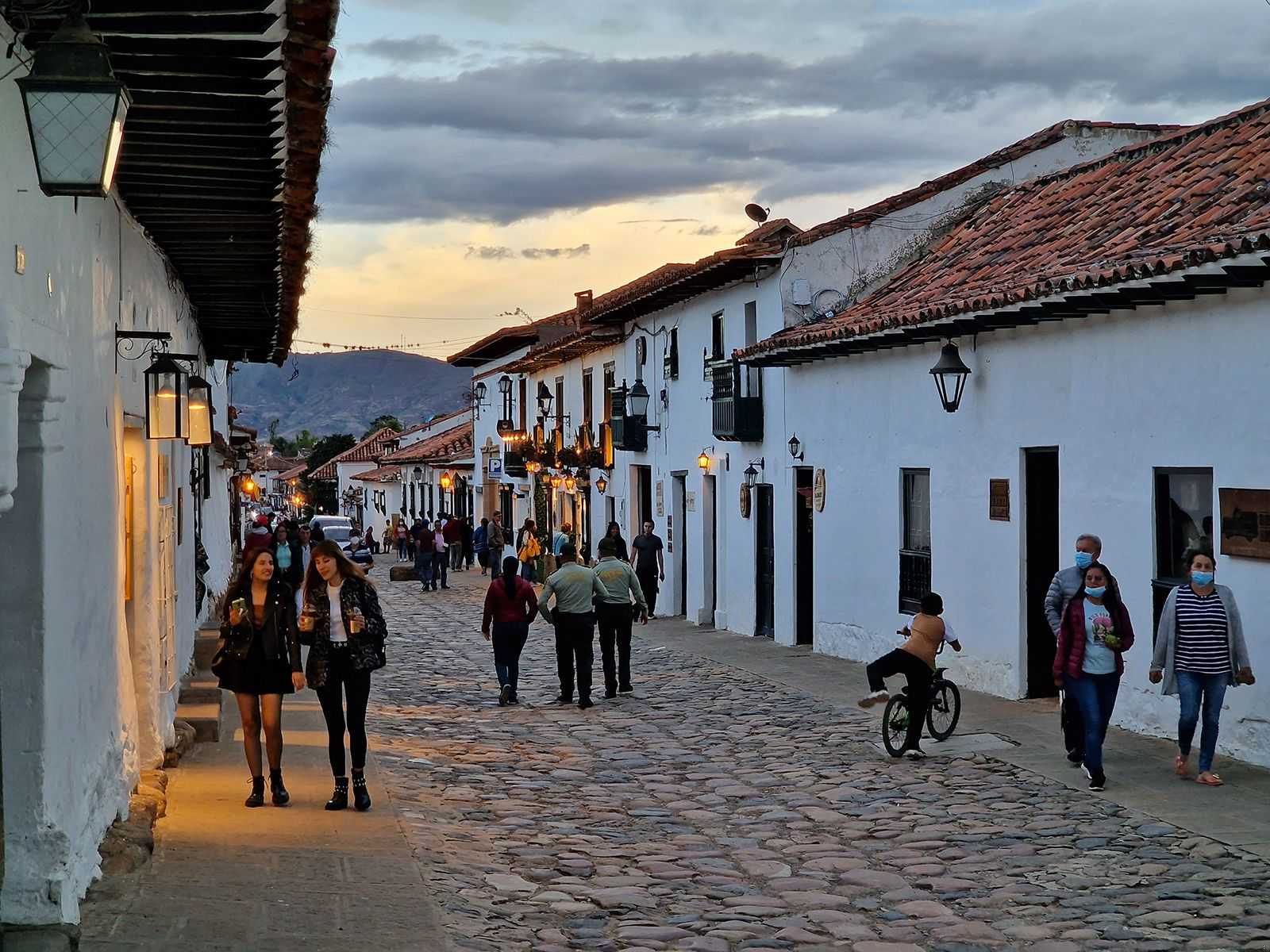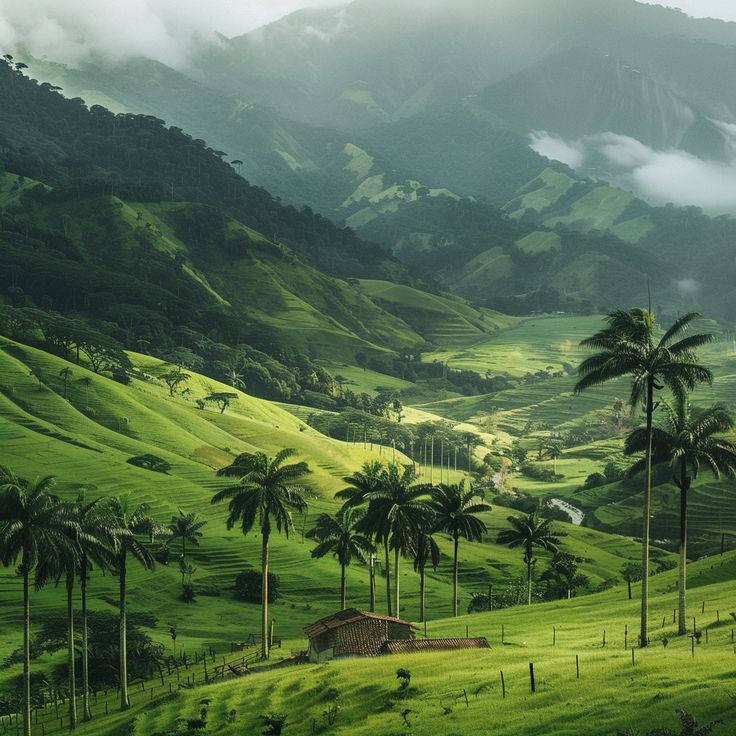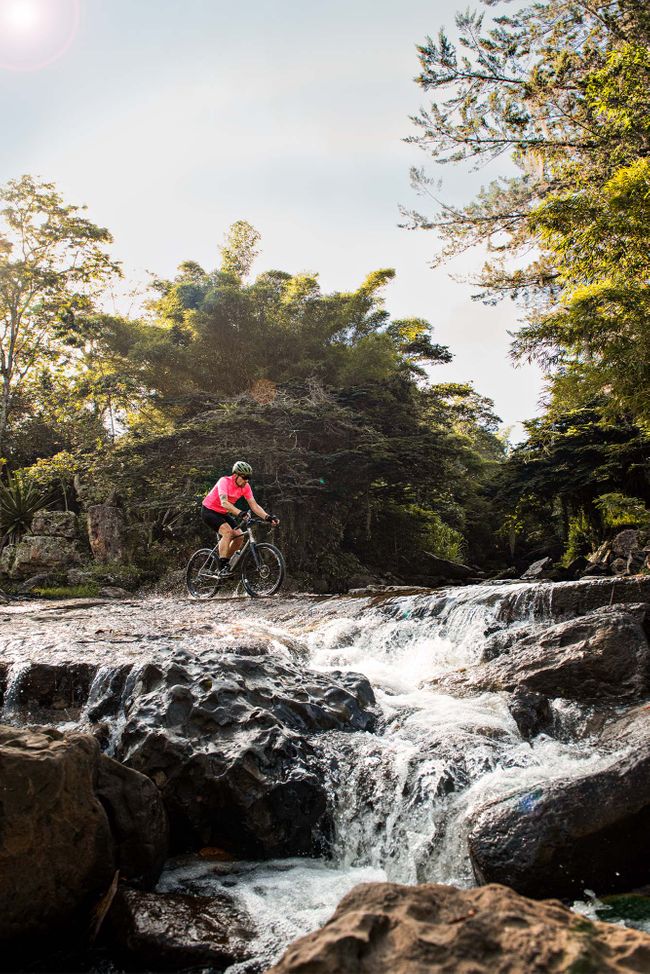Colombia packs an entire continent’s worth of landscapes, ecosystems, and climates within its borders. From mountains to reefs, deserts to grasslands, islands to cloud forests, mangroves to moorlands, and Amazonian jungles to vibrant cities, the country offers an incredible variety of environments. Alongside its dramatic scenery, Colombia is home to an astonishing array of wildlife, plants, and bird species, many of which exist nowhere else on Earth. In fact, nearly 10% of the world's biodiversity is found here, a richness that mirrors the country's diverse cultures, cuisines, and musical traditions.
Mountains

Colombia’s Andean ranges cut through the heart of the country, their towering peaks and rolling foothills home to a mosaic of communities and abundant flora and fauna.
The Sierra Nevada de Santa Marta, rising over 5,700 meters, is the highest coastal mountain range in the world. Overlooking the Caribbean coast, these snow-capped peaks have been home to Indigenous groups such as the Kogi, Arhuaco, Kankuamo, and Wiwa for centuries. The region offers awe-inspiring hikes, including the legendary Ciudad Perdida (Lost City), built by the Tayrona civilization around 800 CE.
Closer to Bogotá, Lake Guatavita, nestled in the highlands, is considered sacred by the Muisca people and is believed to have inspired the legend of El Dorado.
Colombia’s mountain ecosystems include glaciers, misty cloud forests, and páramos, the latter being a rare high-altitude moorland that is home to spectacled bears and the unique frailejón plant, known for its bright flowers and fuzzy leaves.
Descending into the Andean foothills, the land transitions into fertile valleys that produce world-class cacao and globally renowned coffee. In the Zona Cafetera, rolling coffee plantations, known as fincas, welcome visitors for tours, tastings, and immersive stays. The region is also famous for its towering wax palms, which grow up to 60 meters tall.
Desert

Colombia’s deserts are among its most surreal and otherworldly landscapes.
In the far north, La Guajira juts into the Caribbean Sea, an arid expanse of sand dunes, rocky plateaus, and sparse acacia trees. Hidden within this stark landscape are lagoons teeming with thousands of pink flamingos. The region has been home to the Wayuu people, Colombia’s largest Indigenous group, for millennia. A visit to a ranchería (traditional village) offers insight into Wayuu customs, textiles, and medicinal plants.
Further south, the Tatacoa Desert resembles another planet, with canyons, sculpted cliffs, and rock formations in shades of red and gray. Despite its barren appearance, cacti, snakes, lizards, eagles, and even ocelots thrive here. The Tatacoa Observatory, free from light pollution, is a premier stargazing destination.
Ocean

Colombia’s Pacific coast features volcanic beaches, dense rainforests, and extensive mangrove networks. These mangroves, often overlooked, serve as natural coastal barriers and vital nurseries for marine life. The region is famous for whale-watching, as hundreds of humpback whales migrate here every year to give birth in warm tropical waters.
The Caribbean coast, with its palm-lined beaches and turquoise waters, is home to Cartagena, a UNESCO World Heritage Site known for its historic architecture and colonial charm, and Barranquilla, host of South America’s second-largest carnival.
Far from the mainland, San Andrés and Providencia, part of a UNESCO Biosphere Reserve, are surrounded by the third-longest barrier reef system on Earth, a mesmerizing "sea of seven colors". These islands offer prime snorkeling and diving, where visitors can spot turtles, dolphins, octopuses, and starfish.
Afro-Colombian culture is deeply rooted in these coastal regions. San Basilio de Palenque, founded in the 1600s by escaped enslaved Africans, became the first free town in the Americas and remains a vibrant center of Palenquero heritage.
Jungle

The Colombian Amazon sprawls across the southeastern expanse of the country, a vast rainforest crisscrossed by serpentine rivers. Leticia, the remote regional capital on the triple border with Brazil and Peru, is the primary gateway to this biodiversity hotspot.
Boat trips into the emerald depths of the Amazon reveal an astonishing variety of wildlife, from jaguars, sloths, and anteaters to manatees, giant otters, and pink river dolphins. The rainforest canopy, made up of towering ceiba and mahogany trees, echoes with the calls of hundreds of bird species, many of them endemic.
Indigenous groups such as the Ticuna, Yucuna, Huitoto, and Matapi have long been stewards of the Amazon. Many communities offer ecotours, where visitors can learn about traditional medicine, mythology, and crafts made from seeds, bark, and feathers.
For adventure seekers, the Amazon offers rainforest treks, canoe trips, swimming in giant lily-covered lagoons, and even whitewater rafting. Canopy tours allow thrill-seekers to climb 35-meter trees and walk suspension bridges for a bird’s-eye view of the jungle.
Plains

Covering a quarter of Colombia, the Los Llanos region is a vast, tropical grassland stretching between the Andes and the Amazon. Known as llanero (cowboy) country, this area teems with wildlife, including pumas, anacondas, caimans, howler monkeys, and capybaras, as well as around 700 species of birds.
Los Llanos is also home to traditional cattle ranches (hatos), many of which offer accommodations and conservation programs. Visitors can experience safaris by jeep, horseback, or boat, witnessing the region’s wildlife and cowboy culture firsthand. Guests can also join cattle roundups, learn lassoing techniques, and experience cantos de vaquería, ancient "cowboy songs" used to calm livestock.
At night, visitors gather for an open-air feast of barbecued beef, beneath a canopy of stars, while llanero musicians perform joropo, the region’s signature folk music, featuring harps, maracas, and four-string guitars.
Cities

Colombia’s cities are as diverse as its landscapes.
- Bogotá, the high-altitude capital, blends historic districts like La Candelaria with modern art, music, and nightlife.
- Medellín, once infamous, has transformed into a hub of innovation, street art, and culture, linked by its iconic cable cars.
- Cali is the undisputed capital of salsa, where dance clubs pulse with rhythmic beats into the early morning.
- Cartagena enchants visitors with colorful colonial facades, lively plazas, and Caribbean flair.
Each Colombian city tells its own story, offering a fusion of history, tradition, and contemporary life.
A Land Like No Other
Colombia is a country where mountains, jungles, oceans, deserts, and plains converge, creating an astonishingly diverse landscape. Whether trekking through Andean peaks, sailing along the Caribbean, exploring the Amazon, or experiencing vibrant city life, every corner of Colombia offers adventure, culture, and an unforgettable connection to nature.

